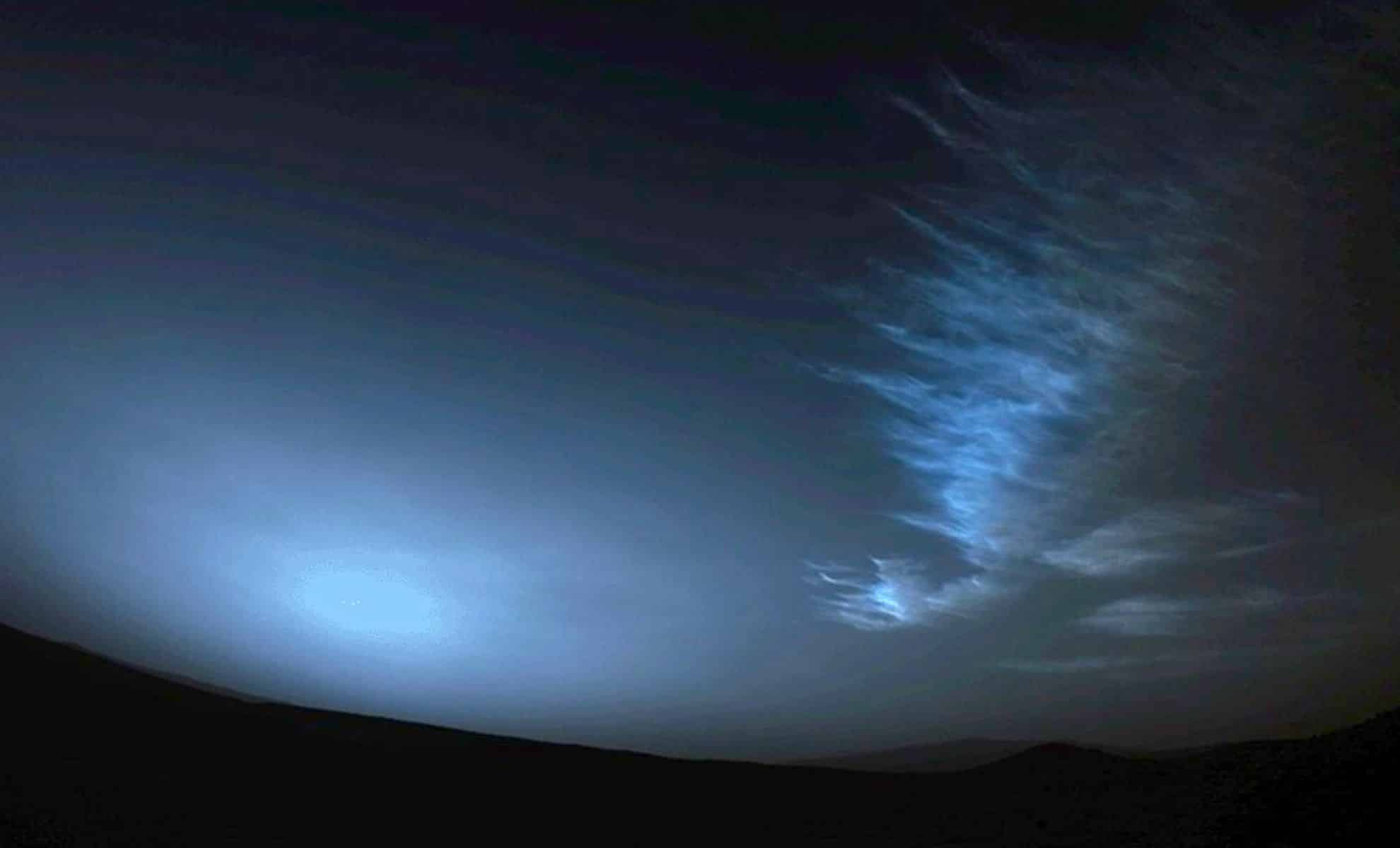
While Mars is typically perceived as a desolate, reddish terrain, recent discoveries from NASA’s Curiosity rover have unveiled a vivid spectacle in the Martian atmosphere. New photographs taken by the rover illustrate the extraordinary sight of iridescent clouds, which shimmer in hues of red, green, and even rainbow colors as they float across the Martian expanse.
A Stunning Display in the Martian Atmosphere
Captured on January 17, these breathtaking images were obtained over a span of 16 minutes during the rover’s 4,426th Martian day (sol). Using its Mastcam, a sophisticated camera system, Curiosity recorded these unique noctilucent (night-shining) clouds, which manifest at twilight when sunlight scatters off ice crystals located high in the atmospheres.
This phenomenon resembles Earth’s “mother-of-pearl” clouds, where the interplay of light and ice particles generates a dazzling array of colors. On Mars, these clouds go unseen during daylight, yet they transform the sky into a mesmerizing tableau at sunset, creating an ethereal radiance.
Credit: NASA/JPL-Caltech/MSSS/SSI
Understanding the Composition of Martian Clouds
In contrast to most Martian clouds that primarily consist of water ice, these iridescent formations are believed to be made of frozen carbon dioxide (dry ice). They float at altitudes ranging from 37 to 50 miles (60 to 80 km) above the surface, with some strands descending as low as 31 miles (50 km) before succumbing to evaporation due to rising temperatures.
Despite the Martian atmosphere being composed of 95% carbon dioxide, the formation of frozen CO₂ clouds is quite rare. As noted by atmospheric scientist Mark Lemmon from the Space Science Institute, these clouds typically appear only during early autumn in the Southern Hemisphere, making them a seasonal highlight.
Interestingly, water-ice clouds were also detected within the same images, hovering at roughly 31 miles (50 km) above Curiosity’s location in Gale Crater.
A Phenomenon First Observed in 1997
NASA’s first sighting of these twilight clouds dates back to over two decades ago, when the Pathfinder mission first identified them in 1997. Curiosity captured its initial images of iridescence in 2019, making this the fourth Martian year in which the rover has documented the phenomenon.
Lemmon, who authored a research paper on these clouds, recalls his first observation:
“I’ll always remember the first time I saw those iridescent clouds; initially, I thought it was a color artifact. Now it’s become so predictable that we can schedule our imaging in advance; the clouds reliably appear at the same time each year.”
Each observation allows researchers to analyze the size and growth rates of cloud particles, enhancing our understanding of Mars’ atmosphere.
The Mystery of the Elusive Twilight Clouds
A perplexing question remains as to why these specific twilight clouds have not been observed elsewhere on Mars. Since Curiosity landed in Gale Crater in 2012, it has recorded these clouds on numerous occasions.
In contrast, NASA’s Perseverance rover, active in Jezero Crater since 2021, has yet to detect their presence. Similarly, Pathfinder’s initial sighting was north of the equator in Ares Vallis, yet these clouds remain undetected in other areas.
Lemmon proposes that gravity waves—which are atmospheric disturbances that cool the air—might facilitate the formation of clouds. However, the behavior of Martian gravity waves is still not completely understood, leaving scientists with many unanswered questions.
Recording the Colorful Skies of Mars with Mastcam
The recent twilight cloud images were captured using Curiosity’s left Mastcam. A stuck filter wheel results in the photos being framed in a partially open circle. Nonetheless, both the left and the higher-resolution right Mastcam continue to yield significant color imagery.
Beyond exploring clouds, Curiosity has recently investigated the Gediz Vallis channel and is currently en route to a location featuring boxwork formations—structural patterns resembling gigantic spiderwebs, created by groundwater and discernible from orbit.
Moreover, the rover has explored an impact crater affectionately termed “Rustic Canyon”, examining its erosion characteristics and rock compositions. By studying craters like this, scientists aim to unveil ancient materials that might contain preserved organic compounds, providing clues to Mars’ distant past and suggesting the potential for ancient life.









